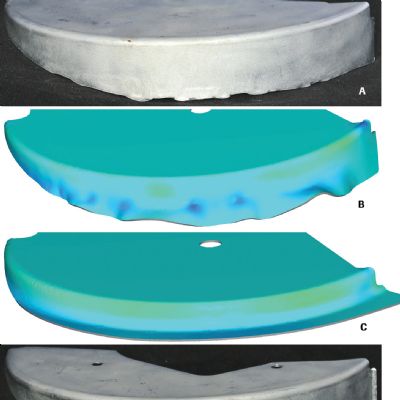What Are Your Recommendations for Applying Coatings to Extend Tool Life?
August 5, 2024Comments
Good question. As with any continuous-improvement effort, be careful when adding coatings. You may think nothing will change, but adding tool coatings can lead to unintended consequences.
The purpose of adding coatings or changing the base-tooling-material grade itself is to extend tool life. Extending the number of hits you can get from tooling during stamping, forming and camming reduces the time and cost required to service or replace the tooling.
Experimentation and development with different steels and coatings on new projects are straightforward. In the end, the winner is the combination with the longest service life and yielding the best quality. Once development completes, everything should proceed status quo. If, however, you try new coatings on existing production tooling as a continuous-improvement process, proceed with caution and use due diligence.
New tooling may be built with standard, uncoated steel for two reasons. First, in development, form and trim punches must be changed to achieve the required results, then groomed as needed to meet quality requirements. Special steels and carbide coatings can be three times more costly than standard tool steels—coating at this stage could be wasteful. Most likely, coatings will be removed during refacing as you make changes in development. In addition, during development you may need to manufacture new components quickly; coating costs and lead times may make this unfeasible.
After development is complete, the tooling usually moves to the repair and maintenance department. In any world-class manufacturing operation, this department oversees the long-term production and continuous-improvement processes. These processes should never end. They should include—but not be limited to—upgrading tool steels and applying coatings to improve tooling life. The purpose is to get away from putting out fires by fixing, sharpening and repairing in a reactive mode. Doing so results in unplanned tooling downtime.
Before trying out coatings on tooling, establish a baseline for the current production process by setting up process-control limits on data taken from key parameters before any changes have been made. Then monitor the data in real time to these control limits until it is stable and consistent. You cannot improve an unstable process.









